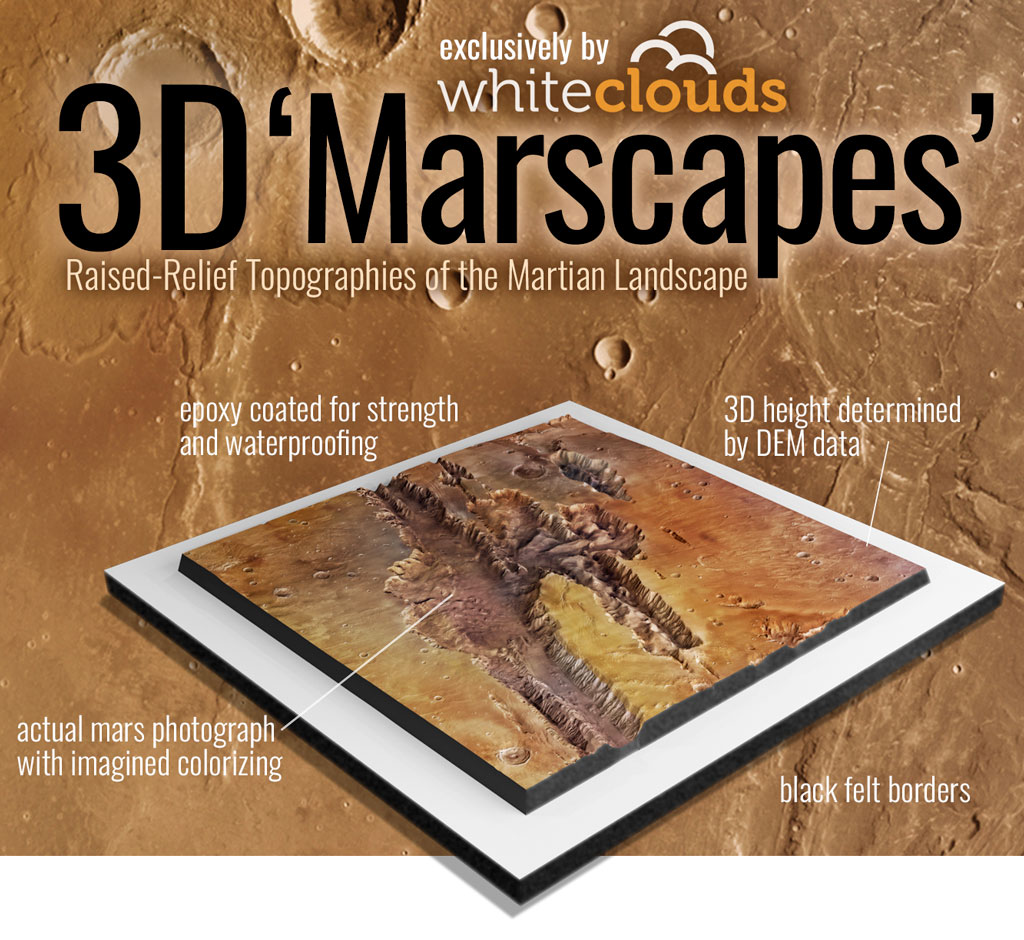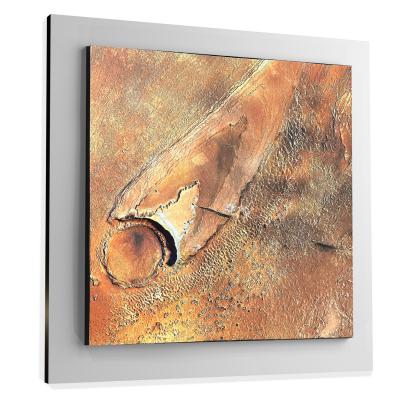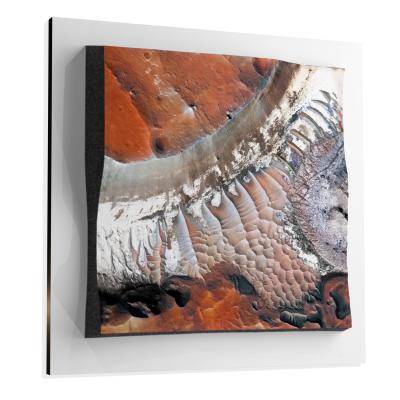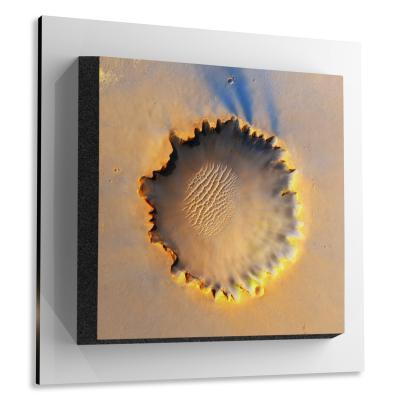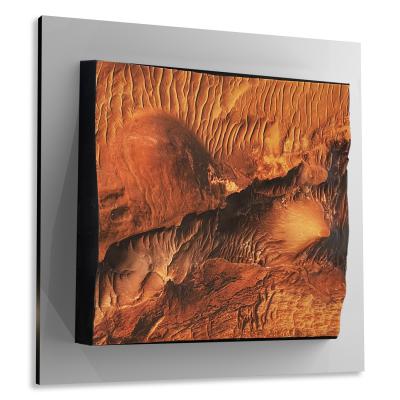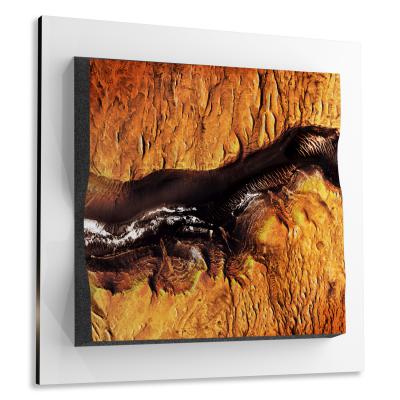Noctis Labyrinthus
Noctis Labyrinthus
We Build Custom 8K Mars Canvas Prints of Noctis Labyrinthus
Did you know we make
custom
8K Mars Canvas Prints

and
3D Marscapes

Noctis Labyrinthus
Noctis Labyrinthus, evocatively christened as the “Labyrinth of the Night,” stands as a captivating and intricate web of valleys, canyons, and deep fractures that grace the Martian landscape. Nestled at the precipice of the immense Valles Marineris canyon system, it acts as both an entrance and a transitional gateway to this vast Martian rift. Over the years, scientists and researchers have been deeply engrossed in studying Noctis Labyrinthus, driven by its exceptional formation patterns and the tantalizing secrets it might unlock about Mars’s intricate geologic tapestry and its ancient climatic tales.
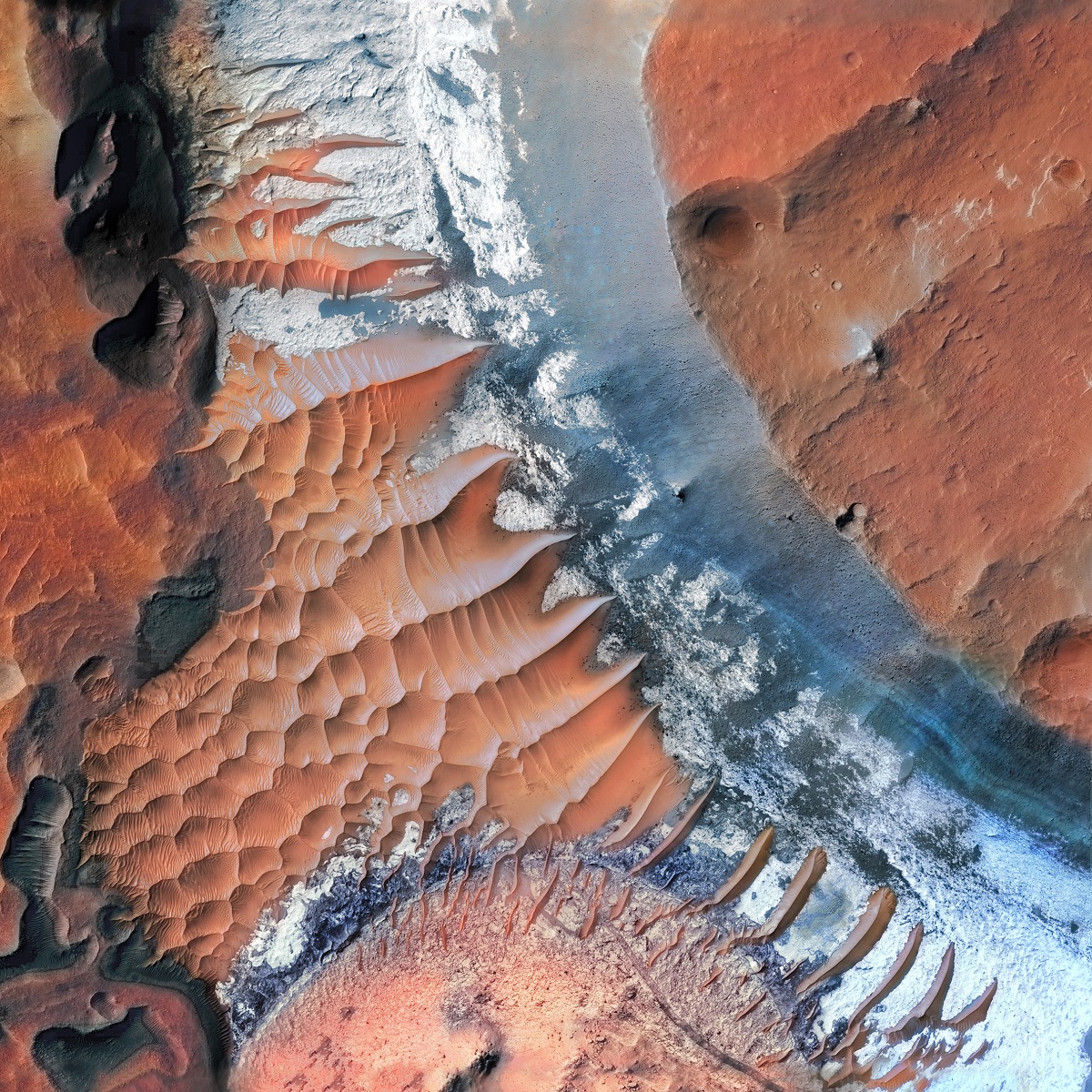 Noctis Labyrinthus
Noctis Labyrinthus
Historical Context
The mysterious, maze-like terrain of Noctis Labyrinthus has long captivated astronomers and space enthusiasts alike. Early telescopic observations of Mars hinted at vast networks of canyons and valleys, but the true nature of these formations remained elusive until advancements in space technology. With the dawn of space exploration, the Viking Orbiters in the late 1970s provided the first detailed images of Noctis Labyrinthus, truly revealing its labyrinthine structure. These initial images sparked interest not just for its intriguing topography but for what this region could indicate about Mars’ geological and potentially hydrological history. Over the decades, as technology evolved and more missions to Mars were undertaken, our understanding of Noctis Labyrinthus deepened, positioning it as a cornerstone in Martian geological studies.
Geographical Location
Ensconced within the vast expanse of the Tharsis volcanic plateau, Noctis Labyrinthus proudly claims its territory to the west of the renowned Valles Marineris. Acting as a natural bridge, this region seamlessly marks a transitional zone, guiding one from the towering volcanic domes and rises of Tharsis towards the awe-inspiring, deep chasms and depressions of Valles Marineris. This geographical juxtaposition, where the monumental volcanic landscapes meet the deep recesses of Martian canyons, paints a vivid picture of the planet’s dynamic geological interplay and showcases Mars’s topographical diversity in its full grandeur.
Advertisement
Sample Marscapes
Geological Composition
The vast and elaborate maze of Noctis Labyrinthus, with its serpentine fractures and deep valleys, have shaped the Martian landscape over eons. At the heart of its formation lies a complex interplay between tectonic forces and intense volcanic activity, particularly from the nearby Tharsis region. As the Tharsis plateau underwent massive volcanic eruptions and bulged upwards, the surrounding Martian crust was subjected to significant tension. This stretching and straining of the crust, in turn, led to the formation of the vast network of grabens and fractures that define Noctis Labyrinthus today.
As one dives deeper into the topography and examines the canyon walls, a rich tapestry of geological history unravels. These walls are not just sheer faces of rock but are adorned with multi-layered structures. Each layer narrates a chapter of Mars’s past. These sequences of deposits, layered one atop the other, tell tales of periods of volcanic eruptions spewing ash and lava, of times when water might have flowed carving its path and depositing sediments, and of winds that swept across the Martian surface, moving sand and dust, resulting in aeolian deposits. The presence of such varied deposits within Noctis Labyrinthus is a treasure trove for geologists, offering a window into the processes that have been at work on the Red Planet for billions of years.
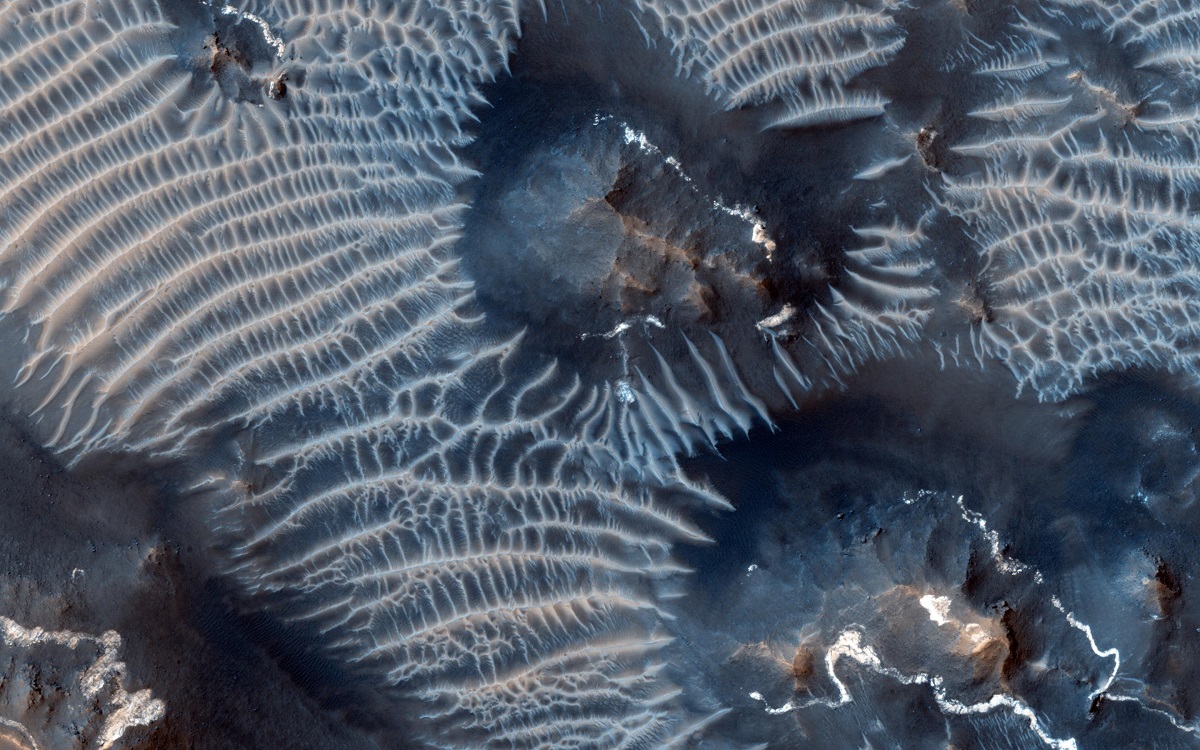 This colorful scene is situated in the Noctis Labyrinthus, Perched high on the Tharsis rise
This colorful scene is situated in the Noctis Labyrinthus, Perched high on the Tharsis rise
Comparative Planetology
Drawing parallels between terrestrial and Martian landscapes provides invaluable insights, and Noctis Labyrinthus is no exception. When compared to Earth’s features, Noctis Labyrinthus resembles a complex mix of the Grand Canyon’s depth and vastness combined with the geological intricacies found in Earth’s rift valleys. The network of fractures and grabens in Noctis Labyrinthus finds its closest counterpart in the East African Rift system on Earth. However, the sheer scale and the unique combinations of features in Noctis Labyrinthus are unparalleled on our home planet. Such comparisons not only enable a better understanding of Martian geology but also shed light on the various processes that have shaped terrestrial planets in our solar system.
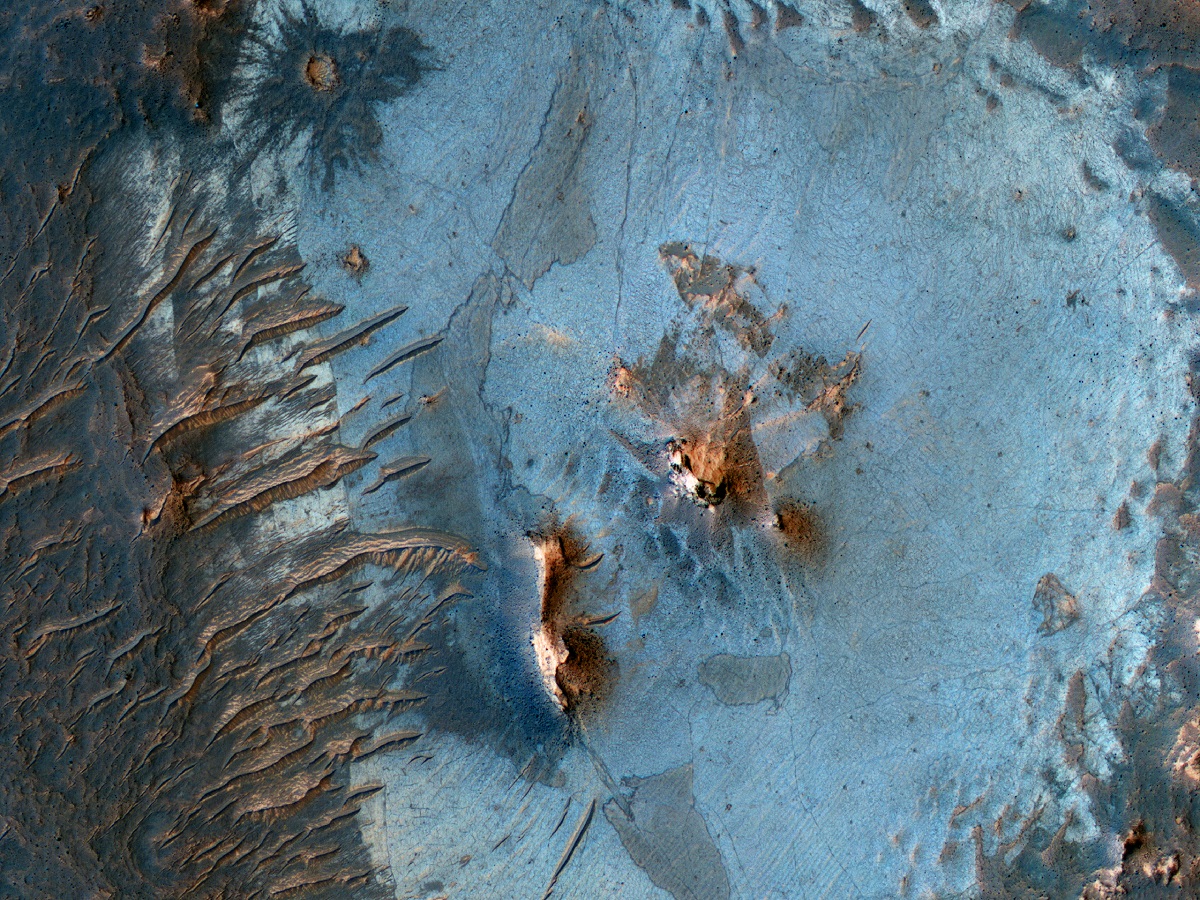 The Gemstone Floor of Noctis Labyrinthus
The Gemstone Floor of Noctis Labyrinthus
Tectonic Activities
While Mars doesn’t have tectonic plates like Earth, it has experienced tectonic-like processes in its past. Noctis Labyrinthus confirms this. The stretching and pulling apart of the Martian crust led to the formation of the vast network of grabens, or depressed blocks of crust bordered by faults. The tectonic activities that formed Noctis Labyrinthus are believed to be closely associated with the upwelling of the Tharsis volcanic plateau. As the Tharsis region bulged upwards due to volcanic activities, the surrounding crust was subjected to immense stress, leading to fractures and the eventual formation of the labyrinth. The interplay between volcanic activity in the Tharsis region and tectonic forces resulted in the intricate network of canyons and valleys seen today.
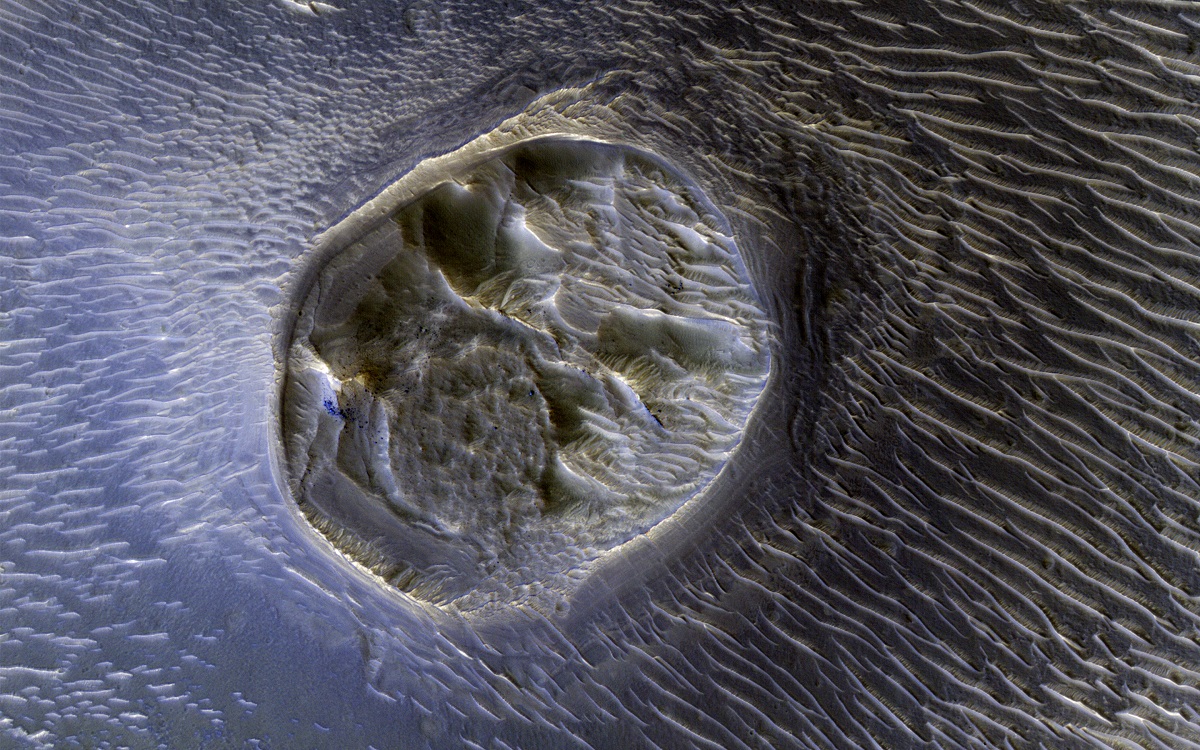 Mesa in Noctis Labyrinthus
Mesa in Noctis Labyrinthus
Significant Discoveries
Evidence of Water’s Legacy
Within the winding pathways and depressions of Noctis Labyrinthus, compelling evidence hinting at past aqueous activity has emerged. Several of the region’s depressions bear unmistakable signs that might be indicative of standing or ponded water from a bygone era. Some of these features suggest the existence of transient lakes that may have existed for limited periods, painting a picture of a Mars that was once potentially wetter than the arid landscape we observe today.
Tales Told in Layers
The intricate layered deposits within Noctis Labyrinthus tell a rich story of Mars’s geological history. These strata might chronicle various events, from volcanic eruptions spewing ash and lava to sediment deposition carried by Martian winds. Additionally, there’s tantalizing evidence suggesting water-based sedimentation, further strengthening the narrative of a once wetter Mars. The deciphering of these layers provides invaluable insights, each tier representing a chapter in the varied geological tapestry of the region.
The Sculpting Power of Wind
The Martian winds have not only whispered the ancient tales of the Red Planet but have actively sculpted and reshaped the landscapes of Noctis Labyrinthus. Aeolian processes, or wind-related activities, have been significant players in the region’s geomorphology. The presence of expansive dune fields, wind streaks, and other wind-driven formations are testament to the erosional prowess of the Martian atmosphere, continuously molding and refining the Labyrinth of the Night.
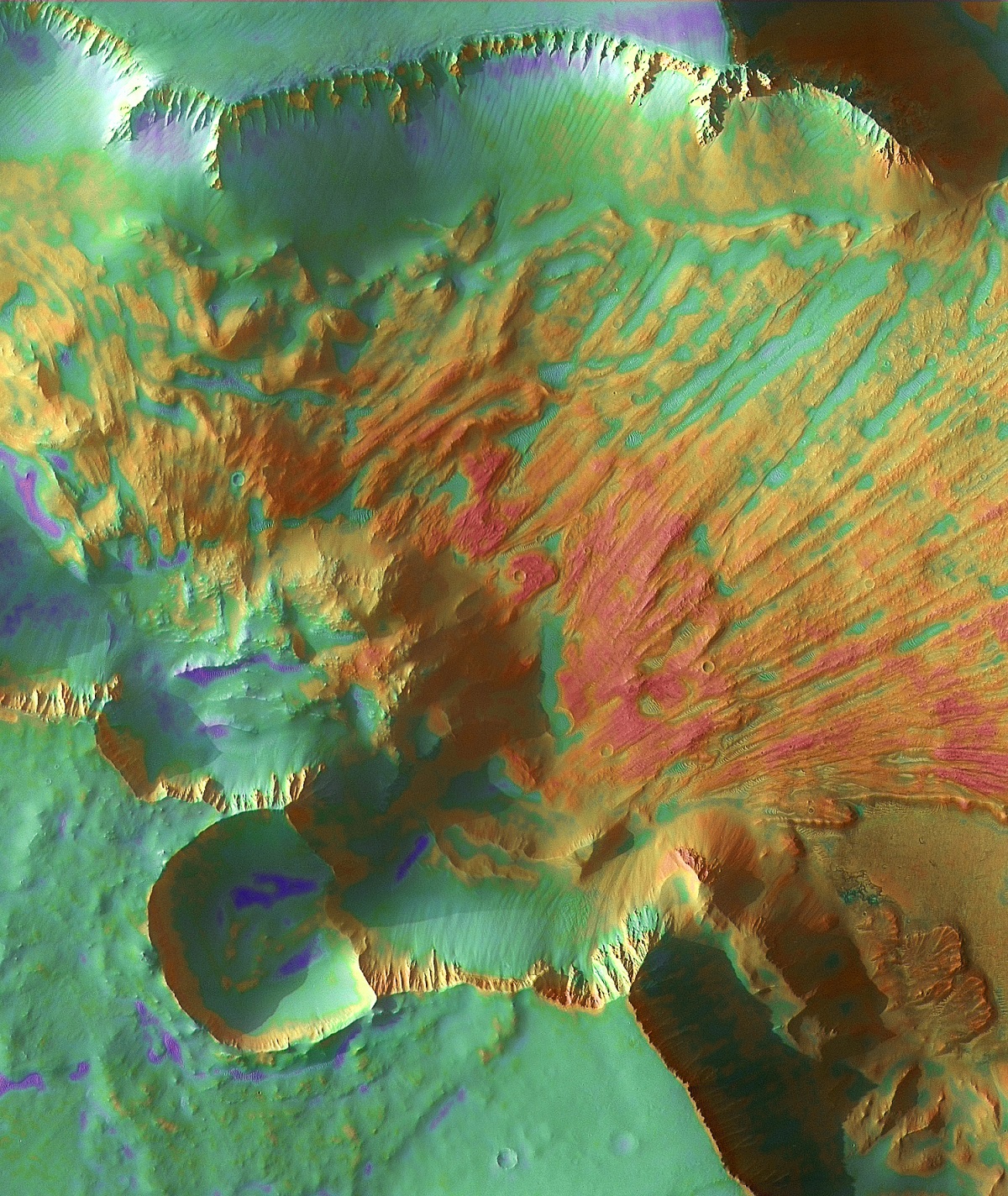 Noctis LandSlide
Noctis LandSlide
Scientific Missions
Exploration in Noctis Labyrinthus
Over the years, our quest to understand the enigmatic Martian landscapes, especially Noctis Labyrinthus, has been powered by a multitude of orbiters, landers, and probes that have tirelessly studied and relayed information from the Red Planet:
Viking Orbiters’ Epoch
Heralding a new era in Martian exploration during the late 1970s, the twin Viking Orbiters revolutionized our understanding of Mars. Their forays into the Martian atmosphere and subsequent image capturing presented some of the earliest, detailed visual expositions of Noctis Labyrinthus. These missions drew back the curtains on the region’s captivating maze-like structures, offering the global scientific community a tantalizing glimpse into what would become a focal point for future exploration.
Mars Express – Europe’s Martian Sentinel
Orchestrated by the European Space Agency, the Mars Express mission stands as one of the pivotal contributors to Martian science. Its extensive suite of instruments has delved deep into the myriad secrets of Noctis Labyrinthus, shedding light on the geomorphological marvels that this region holds. From high-resolution imagery to detailed spectral analyses, Mars Express has enriched our repository of knowledge about this Martian labyrinth.
Mars Reconnaissance Orbiter (MRO) – The HiRISE Visionary
One of the jewels in the crown of Martian exploration, the Mars Reconnaissance Orbiter, brandishes its HiRISE camera with pride. This remarkable instrument has transformed how we view Mars. With its ability to capture unprecedented high-resolution images, the MRO has zoomed into Noctis Labyrinthus, offering an unparalleled depth of detail. These images have been instrumental in facilitating nuanced geological analyses, paving the way for breakthrough findings about the region’s past and present.
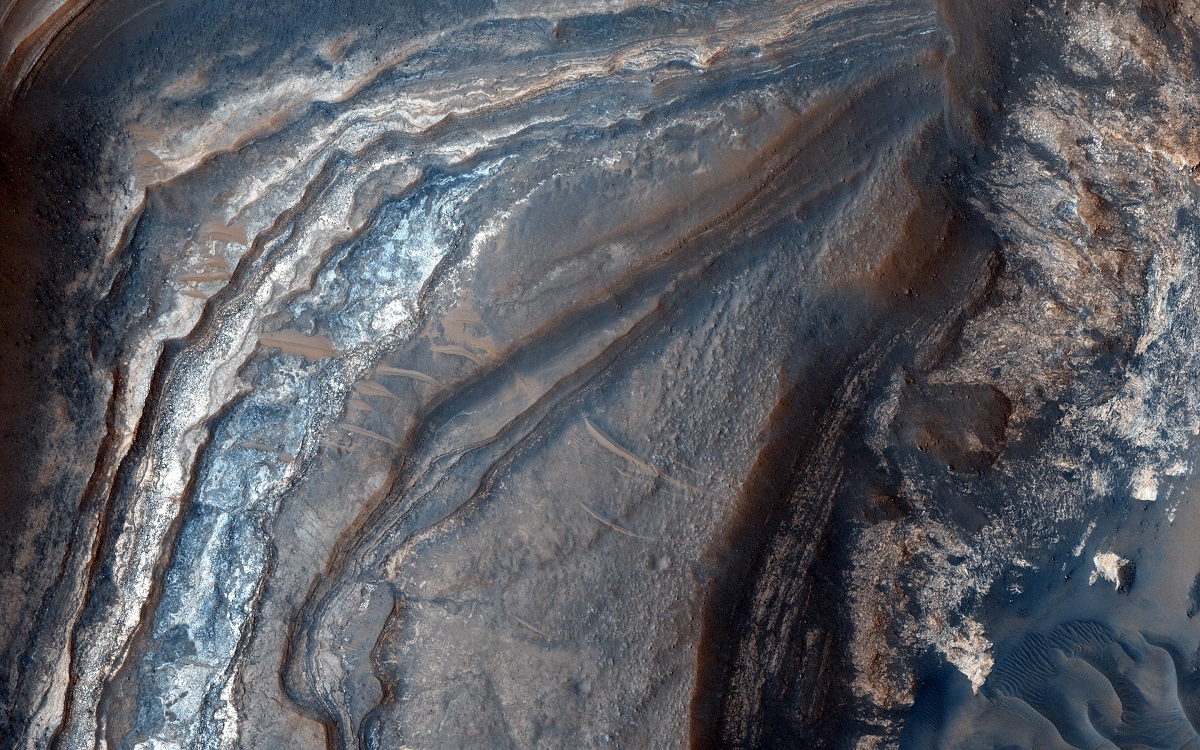 Light-Toned Layering in a Labyrinthus Noctis Pit
Light-Toned Layering in a Labyrinthus Noctis Pit
Geomorphological Wonders of Noctis Labyrinthus
Noctis Labyrinthus, as its name suggests, is a labyrinthine ensemble of intriguing geomorphological features, each narrating a unique chapter of Martian history:
A Web of Fractures
Dominating the landscape, a sprawling network of fractures, or grabens, crisscrosses the region. These geological scars have been etched into the Martian surface due to the relentless stretching and tugging of its crust over eons. They bear testimony to the tectonic forces that have played puppeteer with the planet’s exterior.
Majestic Box Canyons
Sprinkled across Noctis Labyrinthus are the awe-inspiring box canyons. These formations, reminiscent of Earth’s canyons but with a distinct Martian twist, are deep depressions characterized by their steep, towering walls and a somewhat rectangular geometry. They stand as sentinels of time, whispering tales of the geological processes that birthed them.
Historical Layers Unveiled
Adding to the visual symphony of Noctis Labyrinthus are the layered outcrops that grace its valley walls. These sedimentary structures serve as a window into the region’s geological timeline, revealing patterns of deposition, erosion, and transformation that the area has undergone.
Dance of the Dunes
Within the embrace of the labyrinthine valleys, one can find expansive dune fields, crafted meticulously by aeolian, or wind-driven, processes. These sand dunes, ever-shifting and ever-evolving, capture the dynamic interplay between the fierce Martian winds and the planet’s surface, weaving tales of movement and change.
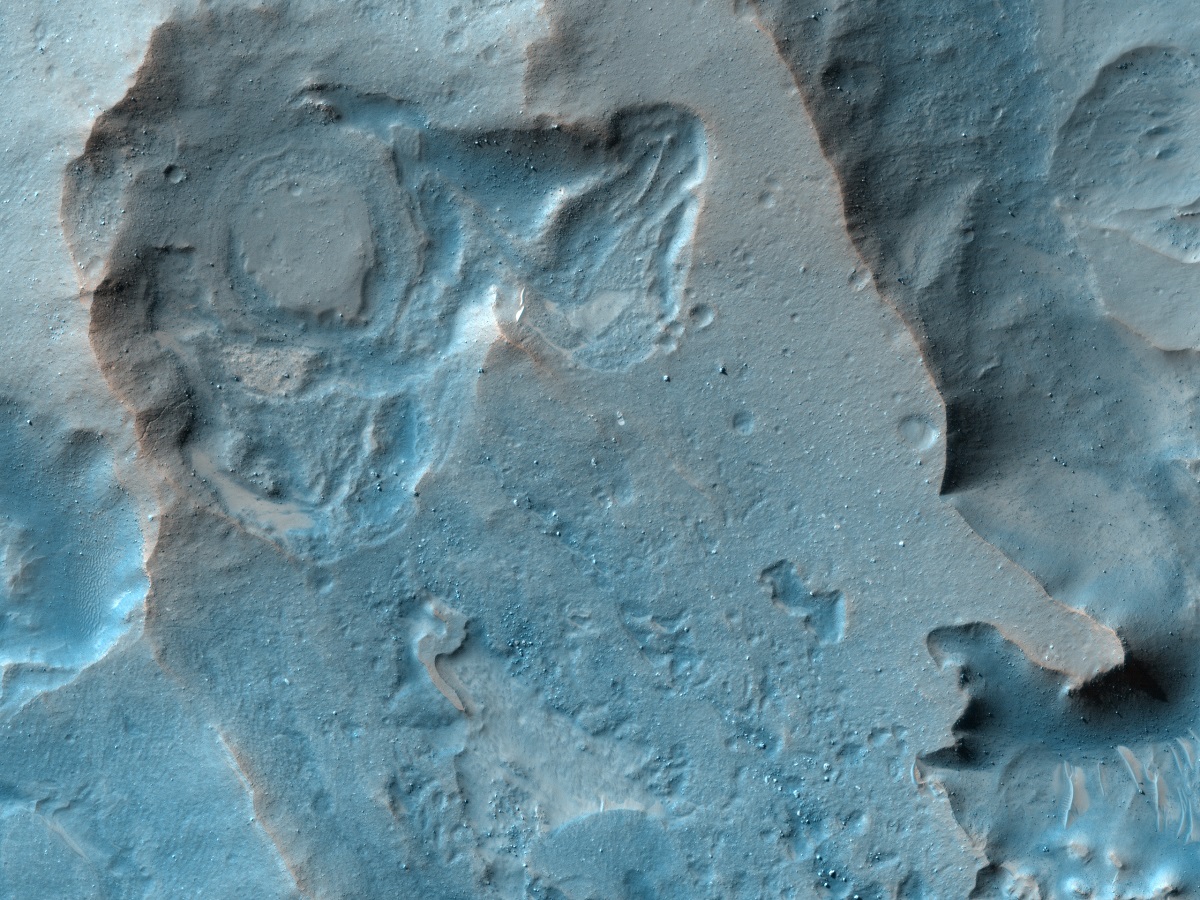 Water Bearing Minerals in Noctis Labyrinthus
Water Bearing Minerals in Noctis Labyrinthus
Potential for Astrobiology
Given its geological history and evidence of past aqueous activity, Noctis Labyrinthus stands as one of the potential sites on Mars where life, if it ever existed, might have left its mark. The presence of features consistent with ponded water or transient lakes suggests that, in its past, this region may have had conditions conducive to life as we understand it. The layered deposits could contain preserved signs of microbial life or organic compounds. Additionally, the potential existence of underground aquifers, hinted at by some of the region’s geological features, could be a refuge for extant life. As a transitional zone from the high volcanic plateau of Tharsis to the deep canyons of Valles Marineris, Noctis Labyrinthus offers a diverse range of environments, each with its unique potential for harboring signs of life. Future missions aimed at astrobiology would do well to consider this enigmatic region as a prime location for exploration.
Noctis Labyrinthus, with its intricate maze of canyons and rich geological history, remains a focal point for Mars exploration. Its unique features not only shed light on the planet’s geologic past but also beckon with the potential of unraveling Mars’s climatic mysteries. As we continue to probe and study this fascinating region, Noctis Labyrinthus stands as a confirmation to the dynamic forces that have shaped the Red Planet over eons.
Check out our 3D Mars Learning Center for more information on Mars and Noctis Labyrinthus. You can also learn more at: NASA Mars Exploration.
More About Mars
Contact us today to learn more about our 3D services and how we can help you achieve your goals.
